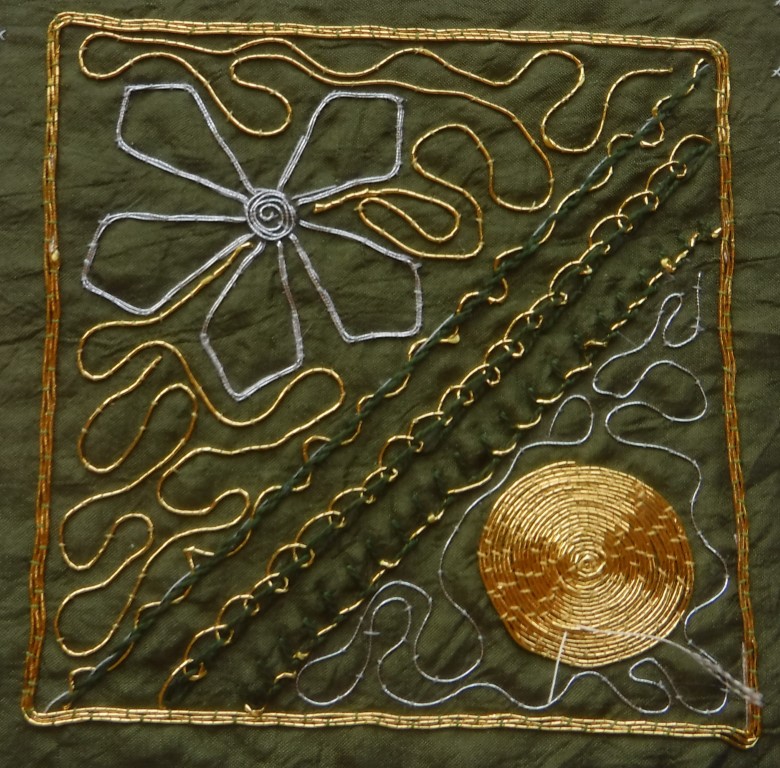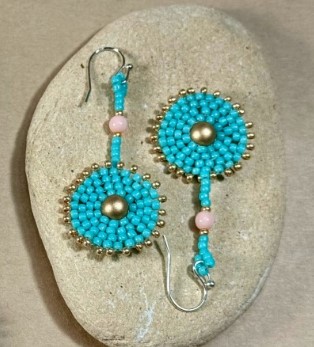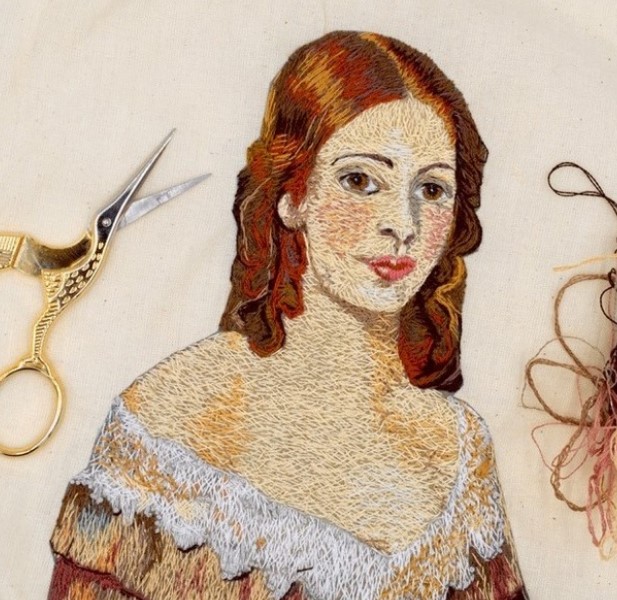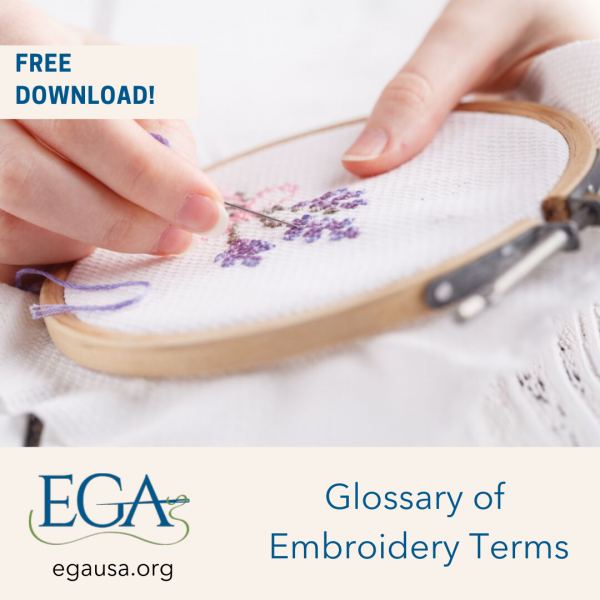2022 International Teacher Tour
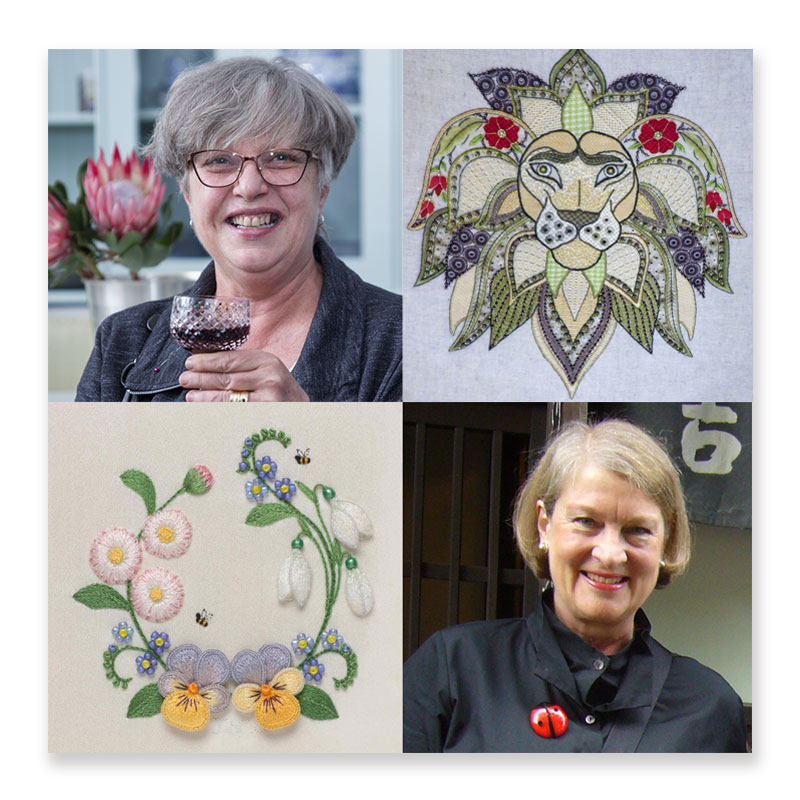
EGA National Seminar 2022: Broadway Bound International Teacher Tour Venues for 2022
Hazel Blomkamp from South Africa and
Jane Nicholas from Australia!
Their engagement on Broadway in New York City is limited and they are excited to perform across the United States!
We are pleased to announce the 2022 ITT Tour Venues!
These teachers will be touring the United States to teach in conjunction with Seminar 2022, Broadway Bound, held in New York City.
We are pleased that so many chapters who requested a teacher were granted their request, resulting in an ambitious schedule for each of the teachers. In addition to seminar week in New York City, Hazel has agreed to teach in 8 locations, and Jane will also teach in 8 locations. The benefit to chapters/regions hosting a venue is that the shared travel and visa costs are kept to a minimum, and we are able to offer a generous education opportunity for EGA members to participate in workshops with international teachers.
To view the dates, location, and projects for each teacher, click on the photos above or scroll below this area.
Individual chapters sponsoring a venue will handle registration and collection of fees. If the classes are not at capacity by mid-June, they will make seats available to interested members from other locations. If you are interested in joining a class that is not hosted by your chapter, please contact Marietta Douglas, ITT Coordinator, at Mlette_97@yahoo.com and your request will be forwarded to the appropriate venue point of contact.
Ellen Saines
Seminar 2022 Dean of Faculty
Faculty2022@egausa.org
Janice Meyers
Seminar 2022 Chair
SeminarChair2022@egausa.org
Available International Teacher Tour Classes
Click the thumbnail to the left of each class to enlarge the picture.
-
California Poppy and Bumble-Bee – 2 day class
Taught by Jane Nicholas (view bio)Jane Nicholas has been researching and working in the field of embroidery for twenty-five years. Specializing in stumpwork and goldwork embroidery, she has written ten books and has contributed widely to magazines on the subject. She teaches in Australia, New Zealand, Canada and the United States of America and continues to research and develop new techniques – particularly in stumpwork.
This small circular design, worked on a background of ivory satin, features a bright yellow California Poppy, Eschscholzia californica, with wired detached petals, a tightly-curled raised flower bud, a padded seed case, and leaves in surface embroidery, and an Early Bumble-Bee, with detached gauzy wings and red-tipped abdomen worked in Turkey knots. The finished embroidery may be framed or inserted into the lid of a box.
Embroidery Techniques: Stumpwork and surface embroidery.
Length of Class: Two-day
Maximum Class Size: 24
Skill Required: All levels
Design Size: 2¼ in circle
Cost of Kit: US$40.00 (includes postage to US)
Kit Contents: Instructions, project diagrams, photograph, tracing paper, ivory satin, quilters muslin, fabrics for applied and detached elements, all required silk, rayon, cotton and metallic threads, beads and coloured wires)
Student Supplies: Basic sewing equipment from the supplied list. As the work is quite fine, a magnifier may be helpful. A power board and extension cord may be needed if students bring magnifying lamps. Three 4” embroidery hoops. Good quality hoops are recommended – best if able to be tightened with a screw-driver. Bind inner ring of wooden hoops with cotton tape. Plastic lip-edged hoops are also suitable – do not bind inner ring. needles: Crewel/Embroidery 5 – 10, Straw/Milliners 3 – 9, Sharps 11 or 12 Tapestry 28 or 26, Sharp Yarn Darners 14 – 18, thimble, small sharp-pointed embroidery scissors and paper scissors, small wire cutters or old scissors (can use nail clippers), fine blunt-nosed tweezers (to shape wire), eyebrow comb (to comb Turkey knots), Stylus, Clover Tracer Pen, or empty (used) ball-point pen for tracing, ruler – 6″ (clear plastic is good) and eraser, masking tape or Scotch Magic Tape, notebook and fine HB lead pencil (a 0.5mm mechanical pencil is good), a few coloured pens or pencils for notes.Schedule
September 2-3 (Friday-Saturday) with our Washington DC Chapter in Fairfax, VA.
September 11-12 (Sunday and Monday) with our Columbus Area Chapter in Ohio.
-
Corncockle and Dragonfly – 2 day class
Taught by Jane Nicholas (view bio)Jane Nicholas has been researching and working in the field of embroidery for twenty-five years. Specializing in stumpwork and goldwork embroidery, she has written ten books and has contributed widely to magazines on the subject. She teaches in Australia, New Zealand, Canada and the United States of America and continues to research and develop new techniques – particularly in stumpwork.
This small stumpwork panel was inspired by an illuminated page of a medieval manuscript. Worked on ivory satin, this design features the Corncockle, Agrostemma githago, a summer-flowering wild flower, with detached reddish-purple petals and long leafy sepals worked with wire and needle weaving. The panel also contains a broad-bodied dragonfly, Libellula quadrimaculata, with detached gauzy wings and a padded leather abdomen, a shiny blue beetle and a tiny red ladybird, both with raised detached wings. The botanical name may be embroidered at the base of this specimen.
Embroidery Techniques: Stumpwork and surface embroidery.
Length of Class: Two-day
Maximum Class Size: 24
Skill Required: Advanced Intermediate
Design Size: 3″ x 7″
Cost of Kit: US$65.00 (includes postage to US)
Kit Contents: instructions, project diagrams, photograph, tracing paper, ivory satin, quilters muslin, fabrics for applied and detached elements, Soie d’Alger silk threads, unusual rayon, silk and metallic threads, beads, leather and coloured wires).
Student Supplies: 10 ” embroidery hoop or stretcher bars, 5″ or 6″ embroidery hoop, three 4” embroidery hoops- good quality hoops are recommended – best if able to be tightened with a screw-driver, Bind inner ring of wooden hoops with cotton tape. Plastic lip-edged hoops are also suitable – do not bind inner ring. needles: Crewel/Embroidery 5 – 10, Straw/Milliners 3 – 9, Sharps 12 or 11, Tapestry 28 or 26, Sharp Yarn Darners 14 – 18, thimble, small sharp-pointed embroidery scissors and paper scissors, small wire cutters or old scissors (can use nail clippers), fine blunt-nosed tweezers (to shape wire), Stylus, Clover Tracer Pen, or empty (used) ball-point pen for tracing, rulers – 6 in and 12 in, masking tape or Scotch Magic Tape, notebook and fine HB lead pencil (a 0.5mm mechanical pencil is good), a few coloured pens or pencils (for notes), small container for beads, magnifier (if required), power board and extension cord may be needed if using a magnifying lamp.Schedule
September 5-6 (Monday-Tuesday) with our Carolinas Region in Rock Hill, SC. (Registration extended to July 25, 2022)
September 20-21 (Tuesday-Wednesday) with our Dallas Needlework & Textile Guild Chapter in Dallas, TX.
-
Garland Berries and Ladybug – 2 day class
Taught by Jane Nicholas (view bio)Jane Nicholas has been researching and working in the field of embroidery for twenty-five years. Specializing in stumpwork and goldwork embroidery, she has written ten books and has contributed widely to magazines on the subject. She teaches in Australia, New Zealand, Canada and the United States of America and continues to research and develop new techniques – particularly in stumpwork.
This small circular panel employs a wide range of stumpwork techniques. Embroidered on a background of ivory satin, the design features a garland of ripe autumn fruits – strawberries, gooseberries, figs, golden raspberries, red currants and beaded boysenberries, and a tiny ladybug with detached wings. The finished project may be framed or mounted into the lid of a box and also may be personalised by the addition of an embroidered initial or date.
Embroidery Techniques: Stumpwork, needle-lace and surface embroidery.
Length of Class: Two-day
Maximum Class Size: 24
Skill Required: All levels
Design Size: 4 in circle
Cost of Kit: US$68.00 (includes postage to US)
Kit Contents: Instructions, project diagrams, photograph, tracing paper, ivory satin, quilters muslin, fabrics for applied and detached elements, felt and stuffing, silk and metallic threads, beads and coloured wire)* Required DMC Stranded Cottons (substitutes may be used) – these threads are not supplied in the kit as you may already have them in your collection:
• Vine – 469 (medium green), 937 (dark green)
• Gooseberries – 3819 (pale green)
• Ladybird – 900 or 817 (red), 310 (black)
• Figs – 433 (medium brown)
• Strawberries – 817 (red)
• Golden Raspberries – 3854 (medium gold), 3855 (light gold)All other threads are supplied in the kit.
Student Supplies: 6 in embroidery hoop, Three 4 in or 5 in embroidery hoops Good quality hoops are recommended – best if able to be tightened with a screw-driver.
Bind inner ring of wooden hoops with cotton tape. Plastic lip-edged hoops are also suitable – do not bind inner ring. needles: Crewel/Embroidery Needles 5 – 10, Straw/Milliners Needles 3 – 9 Sharps Needles 11 or 12, Tapestry Needles 24 or 26, Chenille Needles 18, thimble, small sharp-pointed embroidery scissors and paper scissors, small wire cutters or old scissors (can use nail clippers), fine blunt-nosed tweezers (to shape wire), Stylus, Clover Tracer Pen, or empty (used) ball-point pen for tracing, ruler – 6″ (clear plastic is good) and eraser, masking tape or Scotch Magic Tape, Notebook and fine HB lead pencil (a 0.5mm mechanical pencil is good), a few coloured pens or pencils (for notes), magnifier (if required), power board and extension cord may be needed if using a magnifying lamp.Schedule
September 8-9 (Thursday-Friday) with our Indian River Chapter in Melbourne, FL.
-
Garland of Spring Flowers – 2 day class
Taught by Jane Nicholas (view bio)Jane Nicholas has been researching and working in the field of embroidery for twenty-five years. Specializing in stumpwork and goldwork embroidery, she has written ten books and has contributed widely to magazines on the subject. She teaches in Australia, New Zealand, Canada and the United States of America and continues to research and develop new techniques – particularly in stumpwork.
This small stumpwork garland was inspired by spring garden flowers. Worked on a background of ivory satin, the design features the heartsease (Viola tricolor) with detached petals, raised snowdrops (Galanthus) with wrapped stems and beaded calyx, padded and embroidered daisies (Bellis perennis), small beaded forget-me-nots (Myosotis) and tiny bees.
Embroidery Techniques: Stumpwork, beadwork and surface embroidery.
Length of Class: Two-day
Maximum Class Size: 24
Skill Required: Intermediate
Design Size: 4 in circle
Cost of Kit: US$45.00 (includes postage to US)
Kit Contents: Instructions, project diagrams, photograph, tracing paper, ivory satin, quilters muslin, fabrics for applied and detached elements, felt, beads, wires and all required silk, cotton and metallic threads)
Student Supplies: 6″ embroidery hoop, two 4″ embroidery hoops – good quality hoops are recommended – best if able to be tightened with a screw-driver, Bind inner ring of wooden hoops with cotton tape. Plastic lip-edged hoops are also suitable – do not bind inner ring, Needles: Crewel/Embroidery 5 – 10, Straw/Milliners 3 – 9, Sharp Yarn Darners 14 – 18, thimble, small sharp-pointed embroidery scissors and paper scissors, small wire cutters or old scissors (can use nail clippers), fine blunt-nosed tweezers (to shape wire), Stylus, Clover Tracer Pen, or empty (used) ball-point pen for tracing, ruler – 6″ (clear plastic is good) and eraser, masking tape or Scotch Magic Tape, notebook and fine HB lead pencil (a 0.5mm mechanical pencil is good), a few coloured pens or pencils (for notes), magnifier (if required), power board and extension cord may be needed if using a magnifying lamp.Schedule
September 14-15 (Wednesday-Thursday) with our Fox Valley Chapter in Appleton, WI.
-
Shakespeare’s Flowers: Sampler One: Sweet Briar, Grapevine, Heartsease and Strawberries – 2 day class
Taught by Jane Nicholas (view bio)Jane Nicholas has been researching and working in the field of embroidery for twenty-five years. Specializing in stumpwork and goldwork embroidery, she has written ten books and has contributed widely to magazines on the subject. She teaches in Australia, New Zealand, Canada and the United States of America and continues to research and develop new techniques – particularly in stumpwork.
This small stumpwork panel is the first in a series inspired by the painted border of a letter written in 1598 – the time of Elizabeth I and Shakespeare. Embroidered on ivory silk satin with silk threads, this design features the Sweet Briar, Rosa rubiginosa, with detached petals and needle-woven sepals, Grapevine and grapes, Vitis vinifera, the grapes worked with glass beads, Heartsease, Viola tricolor, with detached wired petals, and Strawberries, Fragaria vesca, padded and covered with trellis stitch. The panel is outlined with a border of fine red lines, worked in back stitch.
Embroidery Techniques: Stumpwork, needlelace and surface embroidery.
Length of Class: Two-day
Maximum Class Size: 24
Skill Required: Advanced Intermediate
Cost of Kit: US$82.00 (includes postage to US)
Design Size: 3 in x 7 in
Kit Contents: Design outline and instructions, Photograph, silk satin, quilter’s muslin, felt, fusible web, Soie d’Alger silk threads, assorted silk and cotton threads, beads and wire.
Student Supplies: 10” embroidery hoop or stretcher bars, Two 4″ (or 5″) embroidery Hoops Good quality hoops are recommended – best if able to be tightened with a screwdriver. Bind inner ring of wooden hoops with cotton tape. Plastic lip-edged hoops are also suitable – do not bind inner ring, needles: Crewel/Embroidery Needles 5 – 10, Straw/Milliners Needles 3 – 9, Sharps Needles 11 or 12, Tapestry Needles 26, Sharp Yarn Darners 14 – 18, thimble, small sharp-pointed embroidery scissors and paper scissors, small wire cutters or old scissors (can use nail clippers), fine blunt-nosed tweezers to shape wire, eyebrow comb (to comb Turkey knots), Stylus, Clover Tracer Pen, or empty (used) ball-point pen for tracing, ruler – 6″ (clear plastic is good) and eraser, small roll of ½” Scotch Removable Magic Tape (translucent), notebook and fine HB lead pencil (a 0.5mm mechanical pencil is good), A few coloured pens or pencils (for notes), magnifier (if required), power board and extension cord may be needed if using a magnifying lamp.Schedule
THIS CLASS IS FULL August 30-31 (Tuesday-Wednesday) with our Constellation Chapter in Ellicott City, MD.
September 17-18 (Saturday-Sunday) with our St. Paul Needleworkers Chapter in Farmington, MN.
-
The First Sip – 2 day class
Taught by Hazel Blomkamp (view bio)Hailing from South Africa, Hazel Blomkamp is the author of 10 – going on 11 – books. She has designed, written about and taught embroidery and beadwork for more than thirty years and is best known for her less conventional approach to embroidery and Crewel embroidery, in particular.
From Hazel’s book, Crewel Intentions, The First Sip measures approximately 10” x 8” and is worked with a variety of both needle lace and weaving techniques. Along with these signature techniques, it includes backstitch, buttonhole stitch, chain stitch backstitch combination, detached buttonhole stitch, fly stitch variations, French knots, long and short stitch, split stitch, satin stitch, stem stitch as well as several other embroidery stitches plus bead embroidery techniques.
Because this class will cover all of the stitches and techniques used in The First Sip design, participants will be taught on a fabric sampler. This will make it possible to cover everything in class and will mean that each person will go home with a reference for what is needed to do when working the project.
Using perle, #80 and stranded cottons, rayon threads and Miyuki beads the project is worked on a winter white cotton linen blend fabric.
Embroidery Techniques: embroidery, needle lace, weaving and bead embroidery
Length of class: Two-days
Maximum Class Size: 25
Skill Required: Basic knowledge of embroidery techniques, other than cross stitch. It is important to note that this class covers a variety of techniques which need to be taught in a relatively short space of time. The class will move quickly and participants should be competent needleworkers.
Design Size: 10” x 8”
Cost of Kit: US$71 (includes postage to US)
Kit Contents: print on cream cotton hopsack, DMC/Anchor stranded cotton, rayon thread, perle, Lizbeth #80 thread, Miyuki seed beads and needle pack plus a teaching kit.
Student Supplies: 12” hoop, sharp scissors, notebook with pen/pencil, lighting/magnification if needed and usual stitching supplies.Note: Participants will be required to own a copy of Hazel’s book, Crewel Intentions and should bring that book with them to class. (Cost of this book is approximately US$29.95.)
Schedule
THIS CLASS IS FULL August 30-31 (Tuesday-Wednesday) with our Monguagon Chapter in Dearborn MI.
September 24-25 (Saturday-Sunday) with our New England Region in Portsmouth, NH.
-
Tony the Lion – 2 day class
Taught by Hazel Blomkamp (view bio)Hailing from South Africa, Hazel Blomkamp is the author of 10 – going on 11 – books. She has designed, written about and taught embroidery and beadwork for more than thirty years and is best known for her less conventional approach to embroidery and Crewel embroidery, in particular.
Tony is the face of a lion and this project incorporates a wide variety of stitches and techniques which will be particularly useful to stitchers that would like to become familiar with Hazel’s signature techniques. These signature techniques include using needle lace techniques for embroidery and loom weaving that has been modified for needle weaving. Measuring 9 ½” x 8 ½”, the project includes backstitch, buttonhole stitch, interlaced chain stitch, detached buttonhole stitch, knotted pearl stitch, long and short stitch, outline stitch, satin stitch, trellis couching as well as several other embroidery stitches plus bead embroidery techniques.
Because time is short and the class will cover all of the stitches and techniques used in the design, participants will be taught on a fabric sampler. This will make it possible to cover everything in class and will mean that each person will go home with a reference for what is needed to do when working the project.
Using stranded cotton, cordonette, perle, satin and metallic threads along with Swarovski crystals, Preciosa glass pearls and Miyuki beads, the project is worked on a natural colored linen cotton blend fabric.
Embroidery Techniques: embroidery, needle lace, weaving and bead embroidery
Length of class: Two-days
Maximum Class Size: 25
Skill Required: Intermediate to Advanced. It is important to note that this class covers a variety of techniques which need to be taught in a relatively short space of time. The class will move quickly and participants should be competent needleworkers.
Design Size: 9 ½” x 8 ½”
Cost of Kit: US$118 (includes postage to US)
Kit Contents: print on natural colored linen cotton blend fabric backed with cotton voile and overlocked around the edges, book of instructions, stitch diagrams, color images, DMC stranded cotton, Color Variations, Special Dentelles #80, satin thread, Diamant thread, Mettler metallic thread, Miyuki seed beads, Swarovski flatback crystals, Preciosa glass pearls, a needle pack and a teaching kit.
Student Supplies: 6” hoop for class work, 14” hoop or embroidery frame to accommodate a similar stitching area, Tailer’s awl or stiletto, sharp scissors, notebook with pen/pencil, lighting/magnification if needed and usual stitching supplies.Schedule
September 10-11 (Saturday-Sunday) with our Wasatch-Salt Lake Chapter in Salt Lake City, UT.
THIS CLASS IS FULL September 17-18 (Saturday-Sunday) with our Louisiana Lagniappe Chapter in Baton Rouge, LA.
-
Tumbleweeds 1 – 3 day class
Taught by Hazel Blomkamp (view bio)Hailing from South Africa, Hazel Blomkamp is the author of 10 – going on 11 – books. She has designed, written about and taught embroidery and beadwork for more than thirty years and is best known for her less conventional approach to embroidery and Crewel embroidery, in particular.
This design, approximately 9 ½” x 9 ½”, takes the use of needle lace techniques in embroidery a step further, combining the different numbered stitches to create petals not unlike insertion lace. It also includes crewel stitches, interesting needle weaving ideas, some bead embroidery and the use of caged crystals, as well as backstitch, bullion knot, buttonhole and blanket stitch, detached buttonhole, cast on buttonhole bar, detached chain, French knots, long and short stitch, Portuguese knotted stem stitch, trellis couching, whipped spider stitch, a variety of other surface embroidery stitches plus needle lace, weaving and bead embroidery techniques.
This class will open up a world of possibilities for the already accomplished embroiderer and is for stitchers who have a good basic knowledge of the art. It will particularly appeal to the embroiderer who enjoys stitching fine, detailed embroidery. Because the class will cover all the stitches and techniques used in the design, participants will be taught on a fabric sampler. This will make it possible to cover everything in class and will mean that each person will go home with a reference for what is needed to do when working the project.
Using perle and stranded cottons, hand painted silk ribbon, Miyuki beads and Preciosa flatback crystals, the project is worked on a natural colored cotton linen blend.
Embroidery Techniques: embroidery, needle lace, weaving and bead embroidery
Length of class: Three-days
Maximum Class Size: 25
Skill Required: Intermediate to Advanced. It is important to note that this class covers a variety of techniques which need to be taught in a relatively short space of time. The class will move quickly and participants should be competent needleworkers.
Design Size: 9 ½” x 9 ½”
Cost of Kit: US$118 (includes postage to US)
Kit Contents: print on 45/55 natural colored linen cotton blend, book of instructions, stitch diagrams, color images, DMC stranded and perle cotton, Di van Niekerk hand painted silk ribbon, Miyuki seed beads, Preciosa crystals and a needle pack.
Student Supplies: 6” hoop for class work, 14” hoop or embroidery frame to accommodate a similar stitching area, sharp scissors, notebook with pen/pencil, lighting/magnification if needed and usual stitching supplies.Schedule
THIS CLASS IS FULL September 2-4(Friday-Sunday) with ourHeartland Region in Cedar Rapids, IA.
September 6-8 (Tuesday-Thursday) with our Pikes Peak Chapter in Colorado Springs, CO.
September 13-15 (Tuesday – Thursday) with our Tucson Chapter in Tucson, AZ.
-
Tumbleweeds 3 – 3 day class
Taught by Hazel Blomkamp (view bio)Hailing from South Africa, Hazel Blomkamp is the author of 10 – going on 11 – books. She has designed, written about and taught embroidery and beadwork for more than thirty years and is best known for her less conventional approach to embroidery and Crewel embroidery, in particular.
This design, approximately 10 ½” x 10” takes the use of needle lace techniques in embroidery a step further, combining the different numbered stitches to create petals not unlike insertion lace. It also includes crewel stitches, interesting needle weaving ideas, some bead embroidery and the use of caged crystals, as well as embroidery stitches that include backstitch, bullion knot, buttonhole and blanket stitch, chain stitch, long and short stitch, outline stitch, Portuguese knotted stem stitch, satin stitch, trellis couching, whipped chain stitch and many others. A variety of needle lace and weaving stitches will be taught and so will bead embroidery techniques that include bead couching and a beaded drizzle stitch.
This class will open up a world of possibilities for the already accomplished embroiderer and is for stitchers who have a good basic knowledge of the art. It will particularly appeal to the embroiderer who enjoys stitching fine, detailed embroidery. Because the class will cover all the stitches and techniques used in the design, participants will be taught on a fabric sampler. This will make it possible to cover everything in class and will mean that each person will go home with a reference for what is needed to do when working the project.
Using perle, dentelles and stranded cottons, hand painted silk ribbon, Miyuki beads and Preciosa flatback crystals, the project is worked on a natural colored cotton linen blend.
Embroidery Techniques: embroidery, needle lace, weaving and bead embroidery
Length of class: Three-days
Maximum Class Size: 25
Skill Required: Intermediate to Advanced. It is important to note that this class covers a variety of techniques which need to be taught in a relatively short space of time. The class will move quickly and participants should be competent needleworkers.
Design Size: approximately 10 ½” x 10”
Cost of Kit: US$149 (includes postage to US)
Kit Contents: print on 45/55 natural colored linen cotton blend, book of instructions, stitch diagrams, color images, DMC stranded cotton, perle cotton and Special Dentelles #80, Di van Niekerk hand painted silk ribbon, Miyuki seed beads, Preciosa crystals and a needle pack.
Student Supplies: 6” hoop for class work, 14” hoop or embroidery frame to accommodate a similar stitching area, sharp scissors, notebook with pen/pencil, lighting/magnification if needed and usual stitching supplies.Schedule
THIS CLASS IS FULL September 20-22 (Tuesday-Thursday) with our Knoxville Chapter in Knoxville, TN.
Frequently Asked Questions
-
Who may participate in the ITT program?
Only EGA venues (chapter or region) may participate.
-
How is a venue set up with a participating teacher?
The request form must be postmarked no later than December 15, 2021 or e-mailed to (or name and email) by December 15, 2021. The chapter president (if hosted by a chapter), or region director (if hosted by a region), is to sign the form indicating that they have board approval to host a venue. Completed forms are to be e-mailed to Marietta Douglas at mLette_97@yahoo.com or mailed to her address in the form.
-
How are venues selected?
Each teacher has a limited number of available days to teach. If there are more requests for a teacher than available days, a lottery will be held to determine the selection of venues. If a lottery is necessary, all requests will be contacted by December 30, 2021 with the results.
-
How are teaching dates arranged?
Selected venues will be plotted on a map in a logical route that returns the teacher to their home. Backtracking will be avoided and travel arrangements will be considered when dates are confirmed. Requesting chapters or regions need to be flexible when requesting their venue.
-
What are the financial responsibilities of each venue?
Each venue will be responsible for payment of the teaching fee of $400 per day. Total administrative costs will be shared among all venues on a per teaching day basis and shall include:
- Teacher transportation to the US
- Visa costs in teacher’s country of residence
- US visa fee and any additional application expenses
- Trip insurance (if applicable)
- Telephone charges incurred by teacher to arrange tour
- Foreign express mail delivery of air tickets and other important documents if incurred
- Expenses incurred by traveling teacher coordinator (approved by Dean of Faculty)
The above expenses will be funded by Seminar 2022. The tour coordinator will bill each venue for its portion of the applicable expenses. Lodging, meals, incidental expenses, local transport and local administrative expenses are the responsibility of each host venue and will not be shared.

